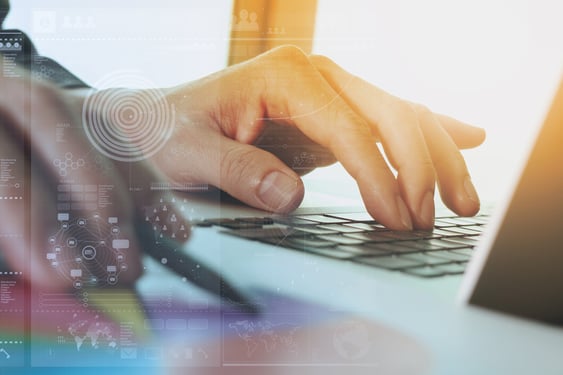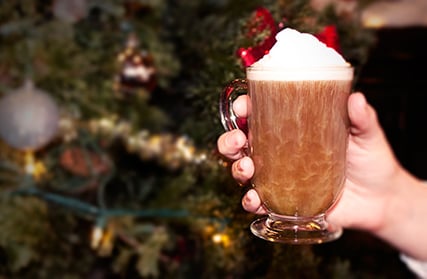As a bar, restaurant, or food service manager or owner you’re constantly focused on your operating margins and how to increase revenue without increasing costs. It’s like the most basic algebraic formula in the hospitality industry. One key way to increase sales without also boosting your spend is to focus on beverage sales through a strategy known as beverage costing.
What is Beverage Costing?
Beverage costing is the percentage of your business’s overall revenue that helps to maintain your inventory and ensures it is well-stocked. How much are you spending on your beverages’ components, and how does that stack up to the amount of revenue you’re generating from beverage sales? Beverage costing is also a useful strategy to help you determine what you should be charging for various drink items you feature. This enables you to have a general sense of your sweet spot and how to pivot when a new menu or weekly special just isn’t hitting the mark like it was forecasted to do. It enables you to be flexible and responsive, and adjust both your sales strategy and costs associated accordingly.
How to Calculate Beverage Costing—The Formula
Of course, there’s math involved in the food and beverage industry, especially where the theory of beverage costing is concerned. Businesses typically evaluate bottom-line success based on their "cost of goods" percentage—which is commonly referred to as either beverage or pour cost. Typically, this is calculated via simple addition. Add up the cost of the product being used and divide it by the cost of the product sold.
 So to that, most businesses employ the following guidelines, as combined costs of the below items create beverage costing:
So to that, most businesses employ the following guidelines, as combined costs of the below items create beverage costing:
- Liquor: 15% – 17%
- Bottled Beer: 23% – 25%
- Draft Beer: 21% – 22%
- Wine: 30% - 40%
- Soft Drinks: 6% – 8%
When combined, based on different sales mixes, prices, and costs, a typical (combined) beverage cost is around 21 percent. Consider the ceiling scenario: when the beverage cost rises above 21 percent of beverage sales, this usually is a red flag that something is wrong operationally.
What is the Ideal Range of Beverage Costing?
What is the “ideal” beverage costing percentage? Many successful restaurants and bars generate beverage costs in the mid-20% range. However, varying types of food and beverage operations can run higher or lower percentages—like fine or high-end dining that could approach 35 percent (bottles of wine and champagne are usually less profitable than other alcoholic beverages) whereas breweries or brewpub-style establishments may operate at a steady 15 percent.
It’s always helpful to run some comparisons of your beverage costing numbers against competitors, or other restaurants with similar menus and service models to develop a working perspective of what is attainable.
- When calculating a potential liquor cost percentage, the correct liquor shot size needs to be considered—is it a standard? A double? What do your servers consider “correct” and have you trained them adequately to be consistent in order to be mindful of profit and loss?
- When determining potential draft beer cost percentages, the sales mix of each draft beer vessel used (mugs, glasses, flights, pitchers) needs to be considered in the calculation.
- Determining a business's potential bottled beer cost percentage is just a matter of dividing a bottle's hard cost by its endpoint selling price.
- Actual cost percentages are the actual costs incurred (can be derived from any distributor’s invoices) divided by the actual sales generated (derived from the POS or sales reports functionality).

Tips to Reduce the Beverage Costing Percentage
If you wish to improve your own operating percentages and utilize the full potential of your business, then you could compare your “actual” cost percentages to that of your “goal” or “potential” cost percentages. Goal cost percentages can be determined by taking into account a business’s list/menu prices, cost of purchased goods, and sales mix.
How else can you protect your margins while appealing to your customers? A few intentional strategies can help you and your team keep pouring happy.
Menu Reengineering
How much time have you devoted (and continue to devote) to your menu? Your back-of-the-house team will probably say lots. And then some. Your menu is your brand promise. Aside from your service model and location, what you serve customers is why they visit and why they return. Devoting the same time and resources to your beverage menu is just as important as the food – there’s no reason for beverages to become a secondary consideration.
Consumers have begun to assume there will be drink menus available where they seek food and beverages but might only think of it in terms of alcoholic offerings. Creating a drink menu that proudly highlights everything you pour and offer will offer customers that awareness. It will communicate to them the options and customization and give pause when people revert to the ice-water-and-lemon standby.
If your guests appear to be water aficionados, not all is lost. You can still commit to boosting sales that impact your bottom line with a few tips.
1. Offer vs. Ask
When your servers or staff greets patrons, change the delivery. Have them greet your customers and offer a suggestion for beverages right off the bat – Hi, I’m Your Server. Welcome to This Establishment. Can I start the four of you with a round of sparkling water and fresh lime? This will lead your customers down an entirely different path of thinking about the beverage portion of their meal and experience.
2. Make it Memorable
Presentation is everything. How are your non-alcoholic beverages presented? Consider the barware you’re utilizing down to the quality of the ice and straw or garnish situation. If you’re going to promote your amazing beverage lineup, don’t resort to serving it in plain or basic plastic glasses.
3. Celebrate Seasonality
 If you serve beer on draught or bottle you know consumers clamor for seasonal brews with each passing month. Carry that over into your non-alcoholic offerings, too. Think of the summer’s fresh iconic flavors – like a sweet mango iced tea or a rhubarb-laced lemonade. An easy customization would be to follow produce into its seasons – thinking along the lines of pomegranate and blood orange in the winter – even garnishing a sparkling water or soda with a fresh, focused flavor will leave your consumers impressed and satisfied.
If you serve beer on draught or bottle you know consumers clamor for seasonal brews with each passing month. Carry that over into your non-alcoholic offerings, too. Think of the summer’s fresh iconic flavors – like a sweet mango iced tea or a rhubarb-laced lemonade. An easy customization would be to follow produce into its seasons – thinking along the lines of pomegranate and blood orange in the winter – even garnishing a sparkling water or soda with a fresh, focused flavor will leave your consumers impressed and satisfied.
Bernick’s Can Offer the Best Beverage Costing
Be cautious of a set-it-and-forget-it distributor, fountain included. Distributors should be more and do more than drop off inventory for you. A dedicated distributor should be reviewing the results of your beverage program to gauge what is selling best and what else to explore on your behalf. They should share innovations with you, and opportunities for growth, as well as new products or equipment that benefit your business.
There should be conversations about programs or marketing support available to the distributor’s customers. For example, Bernick’s works with customers on menu support—adding fountain beverage logos or line items to a menu can increase beverage sales by 20 percent.
Installing a fountain unit and delivering products is only a small portion of what a beverage distributor can do for its customers. That is truly just the beginning. It's common when people begin their search for beverage distributors, they're focusing on the cost or the logistics of a transactional business process. For the ultimate benefit of your business, look beyond the economic side of the potential partnership, and dig deeper. Look for all the little things a dedicated beverage distributor can bring to the table that are crucial for long-term success.
/FOUNTAIN.jpg?width=666&height=400&name=FOUNTAIN.jpg)

